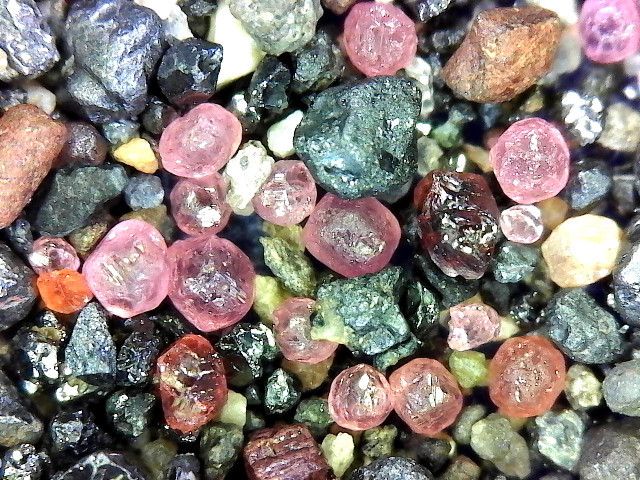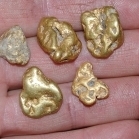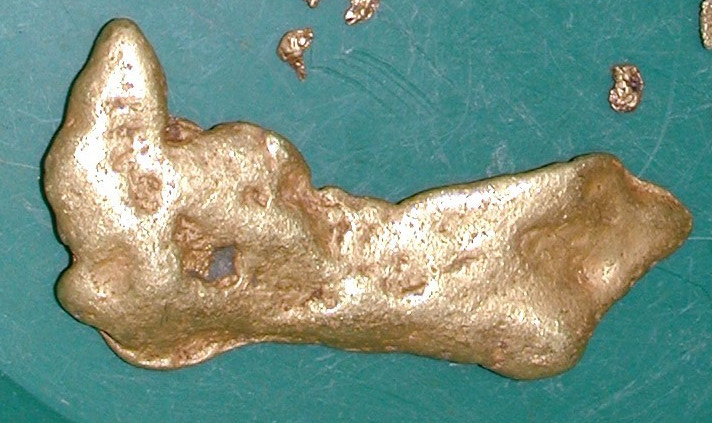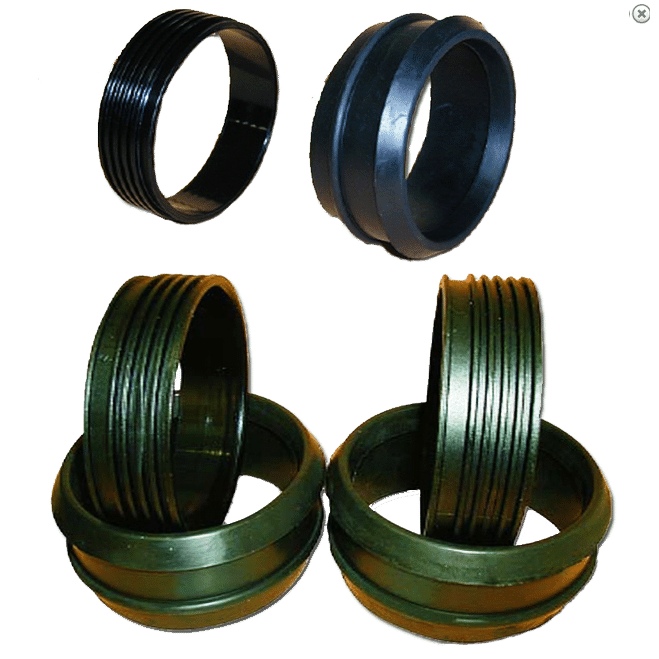-
Posts
113 -
Joined
-
Last visited
Content Type
Forums
Detector Prospector Home
Detector Database
Downloads
Posts posted by Bob(AK)
-
-
looks like jasper
-
Strange for sure. I have seen some real dark amber and amber is quite soft
-
Good chance that is wood. Should be quite heavy and like Steve said, cut a chunk off. If then it is all
solid black, you don't see the grain of wood, soak it in Clorox for a week or however long it takes. Sometimes
soaking does nothing but usually it will work. Here is an example that was all black. There are small crystals also
-
Hibby, look like nice Madagascar fossils, good chance that the light materials on your fossils will fluoresce if they are polished. If they have been sprayed with clear they will not. I don’t know what the host rock is but looks man made
-
20 hours ago, Jim Hemmingway said:
Hi Hibby... we'll ignore your second question because it has been suitably addressed above. Shortwave light is not the same thing as black light at all.
Light below the wavelength of violet light is described as ultraviolet light. Keep in mind as you read this explanation that ultraviolet (UV) light is invisible to the human eye. Longwave UV peaks at about 360 nanometers, while shortwave UV peaks at about 254 nanometers. Midwave UV light is generally considered to peak at about 312 nanometers.
"Blacklights" are an inexpensive way for beginners to get started in the hobby as they do produce longwave UV light that will work fine for minerals that happen to fluoresce brightly when exposed to such light. While equipped with a visible light filter, these inexpensive filters are not nearly as effective as the visible light filters incorporated into shortwave, midwave, and longwave UV lamps suitable for observing fluorescent minerals. Hence the visible light inherent to using blacklights can and does frequently overwhelm the longwave UV light effects on fluorescent minerals.
Next basic thing to understand is that most minerals do not fluoresce brightly under longwave UV light. In order to see all the bright colors that make fluorescent minerals so attractive, as a minimum you will require a shortwave UV lamp. As a general rule of thumb, these are considerably more expensive than longwave UV lamps, and also should be used with protective eyewear. A good battery-powered shortwave UV field lamp is priced comparably with entry level VLF metal detectors. Midwave lamps are usually purchased only by advanced hobbyists, and are at least as expensive as shortwave UV lamps. There are a number of minerals that respond better to midwave UV light than to either shortwave or longwave UV light. Hope this helps to clarify things a bit…
Jim.
Thanks for your help Jim. Yes, my 60 watt short wave cost me $750 several years ago
-
What Marx said, Pudding rock and conglomerate kind of are similar.
As far as lights, black light is a type of ultraviolet but not much good for
use with minerals. There are three wave lengths used on minerals, short, med and long. For
where I'm at short wave works best on most Alaskan minerals that fluoresce , but long does work on
some. Medium I have never used.
-
I only use the Inreach for sending and receiving messages, costs $15 a month. You can suspend service if you won't be using it for a period of time for instance winter
-
Get a Garmin Inreach, my 2 cents
-
-
For those of you down Arizona way, the big show starts soon. Thousands of vendors at numerous hotels and parking lots
across Tucson, have fun, http://www.tucsongemshows.net/coming.html
-
That is a great job of writing Jim, and a great tale. Watch out for that bear spray it can get you. And by the way, bear spray does not work on big foot
-
Jim, that jasper specimen is in the house, so is the "bog".
Dick, I knew you would recognize that piece. Jasper is Alaskan from
the Talkeetna Mts. Some big chunks there that are to big to haul out. What
does the haul road jasper look like?? Kanayut conglomerate is probably
what you found in the Brooks-has various colors of chert. photo of Kanayut chert
-
-
On 11/3/2017 at 7:55 AM, Jim in Idaho said:
Really nice, Bob! From what I've seen in Wyoming, and Idaho, blue flourescence is fairly rare. That "tube" nodule is also a special find.
Jim
Jim Idaho, I actually see quite a bit of blue which is mostly calcite and some agate. Don't know much about rocks from your part of the country. I do have some stromatolites I think from Montana or Wyoming, Bob
-
On 11/1/2017 at 7:45 PM, Jim Hemmingway said:
Very attractive rocks Bob, I like them both. I'm not familiar with your second rock, but it certainly does respond nicely to the shortwave light. Hope you will post more of your summer finds over the winter months. I'll try to do the same with some of my rockhounding finds, probably later in the winter.
WTG

Jim.
sounds good Jim, I would like to see more of your minerals, Bob
-
-
-
I think Si Tech has it along with others. Don't remember what brand I have but looks like the picture, B
-
On 10/25/2017 at 10:12 PM, sjmpainter said:
Bob, I did try the Si Tech dock system. I had Neoprene wrist seals and I think the system I used was designed for Latex. The set up came apart repeatedly and I gave up and went back to the 7mm mitts.
What set up did you find that worked?
I use this type inner and outer ring, never had a glove come off. Glove just fits tight over outer ring and I do add a rubber band but probably not needed. I have latex seals but should work on either.
-
Been ther done that as far as no sun in the canyon. Tough this time of the year when you get out of the cold water and into the colder air. Have you ever tried a dry glove set up, works great, no cold hands.
Something that happened to me late Sept last year on Alfred Creek my foot valve kept freezing up with ice and slush. Temp was in the 20's so not that cold, had to quit, B
-
Thanks,I am familiar with that site. The camera there has been all crazy lately like the wind blows it around, B
-
On 10/15/2017 at 10:25 PM, sjmpainter said:
Yes, I am referring to cubic feet per second.
I use a USGS site that may be of interest to anyone working in/around water. I have a link on my smart phone and I can check water conditions anywhere, really cool!
Here is a link https://waterdata.usgs.gov/nwis
I use the same USGS site, very helpfull
-
I have two of these cameras, fun to play with. Here is black sand and garnets 250x

-
Glenn, great report on the Denver show. Thanks for all the photos




.thumb.jpg.8d1fdef814664348fcb73a6f074a5030.jpg)

Original Golden Eagle Nugget Find
in Detector Prospector Forum
Posted
I know where that came from